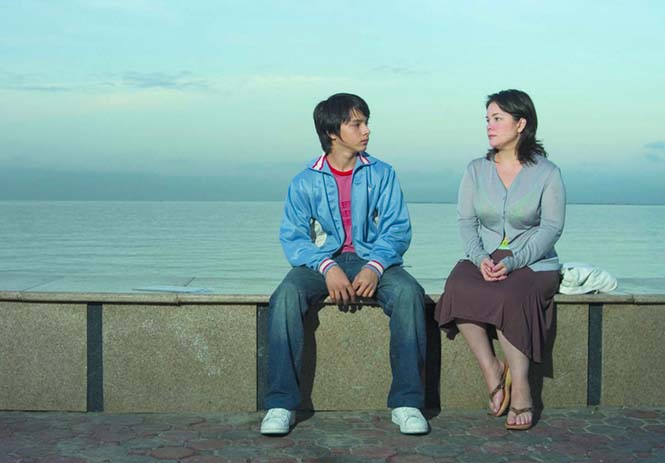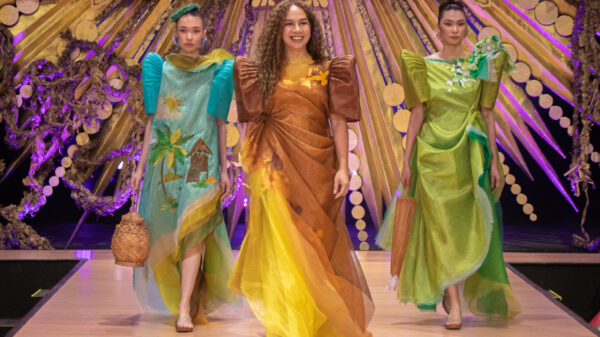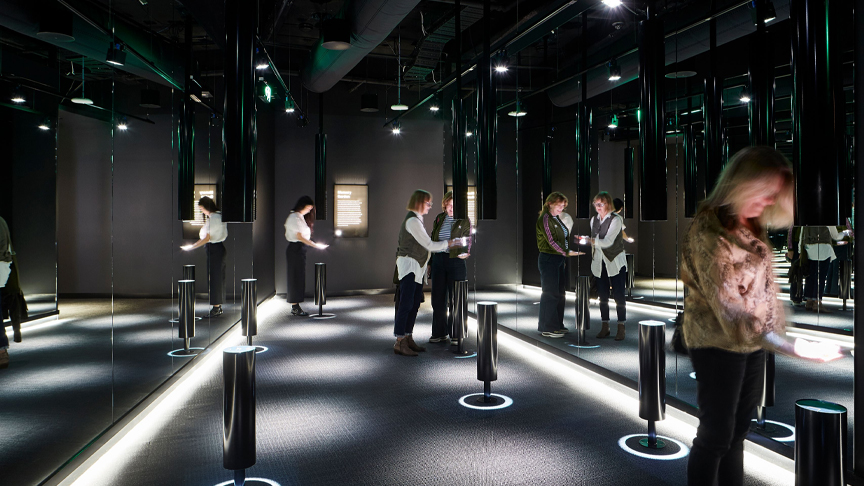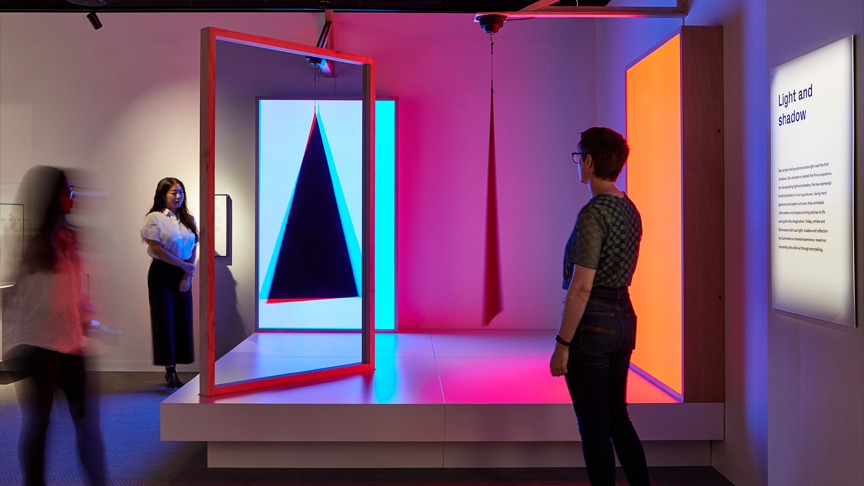After a two-year, $40 million redevelopment, ACMI – Australia’s national museum of screen culture – welcomes audiences to its newly transformed museum.
Architecturally and digitally transformed, the new ACMI offers a brand new, 1,600sqm permanent exhibition; an investment of over $1 million into moving image art; a world first media preservation lab; state of the art education, event and cinema spaces and a new hospitality offer led by celebrated chef Karen Martini. ACMI’s architectural, programmatic and technological transformation is set to redefine the museum experience in Australia.
Led by Director & CEO Katrina Sedgwick OAM, ACMI’s journey towards renewal began in 2015, long before pandemic thinking changed the way people interact with museums. The revitalised ACMI will provide visitors with a highly accessible and multi-faceted contemporary experience – an offer where digital technology is an inherent component of the experience itself.
Open seven-days a week, ACMI has implemented COVIDSafe measures including QR scanning upon entry, sanitising stations, acrylic screens at service desks to enhance physical distancing and regular cleaning across all the museum’s interactive exhibits. ACMI’s new operating hours and online booking system ensure the museum is as safe and accessible to visitors as possible.
During a time of limitless digital and screen content, ACMI acts as a guide, taking people behind the scenes, revealing how the moving images that shape societies are made. By investing in curatorial and digital expertise in parallel, ACMI has reimagined what a museum experience can be – this is a museum curated by humans, enabled by technology, which can be accessed anywhere in the world.
“Over the past 20 years, ACMI has grown from an idea to the world’s most visited museum of screen culture. Thanks to the incredible support of the Victorian Government, and the generosity of our partners and donors, our museum now delivers a unique and sophisticated experience that truly captures what a modern museum can be,” said ACMI Director & CEO Katrina Sedgwick.
“Victorians are hungry for creative experiences and ACMI’s reopening will entice more visitors back to the heart of Melbourne with new interactive and immersive exhibitions,” said Minister for Creative Industries Danny Pearson. “This redevelopment will further cement ACMI’s position as one of Victoria’s key creative institutions and one of the world’s best screen museums.”
NEW EXHIBITION: The Story of the Moving Image
Alongside new and inviting public spaces, the revitalised ACMI is anchored by a free, 1,600sqm centrepiece exhibition The Story of the Moving Image, which takes visitors of all ages on an interactive journey through the past, present and future of the moving image. Featuring over 900 objects from around Australia and the world this superbly designed exhibition is interactive and experiential.
See costumes from ground-breaking films including The Favourite and True History of the Kelly Gang alongside stunning contemporary artworks. Play new and retro videogames in Games Lab Presented by Big Ant Studios, splice movie scenes on the Edit Line, make your own sound effects in the Foley Room and hold living memories the palms of your hands in the Memory Garden installation.
First Peoples art and moving image practice are woven throughout the exhibition, from the Aboriginal History Archive display curated in collaboration with Gumbaynggirr activist, academic and actor Gary Foley to the stunning large-scale moving image work Canopy (2020) created by Torres Strait Islander filmmaker John Harvey. Visitors to the exhibition are greeted and farewelled by site specific multi-part artwork Yanmeearr (2020) by Gunditjmara artist Vicki Couzens. The work references how ochre markings on the body capture and reflect light during ceremony, creating a centuries-spanning connection between traditional First Peoples storytelling and the contemporary moving image.
NEW TECH: The Lens, Constellation and XOS
Every audience moment across the exhibition can be saved onto the Lens, a free ACMI-designed device that allow visitors to collect favourite objects and artworks to explore more deeply after their visit. The Lens also activates the Constellation: a large-scale activation at the end of The Story of the Moving Image that projects a human-curated collection of moving image works linking back to each object on the visitor’s Lens.
Powered by a proprietary experience operating system called the XOS, ACMI’s new technological approach redefines the museum experience, allowing physical and digital content to connect in ways not yet seen in Australia. Via a combination of technology and human curation, the knowledge and information held by ACMI will be accessible to visitors wherever they are, allowing them to go much deeper into film, TV, videogames and contemporary art.
NEW COMMISSIONS: Moving image artworks
Of the $1,087,000 invested in moving image art over the course of the museum’s renewal, $880,000 has gone towards funding 15 commissions, of which 70% are by Indigenous artists and 60% have women in a lead creative role.
The first solo exhibition at the new ACMI will be Darling Darling by 2020 Ian Potter Moving Image Commission recipient Gabriella Hirst. The video work parallels the precise and elaborate care taken to preserve colonial paintings of the Australian landscape with the real-world preservation of the Murray Darling Basin.
NEW CINEMA: Wong Kar Wai
ACMI’s launch program also includes the film season Love & Neon: The Cinema of Wong Kar Wai. Presented in association with Sydney Film Festival, NFSA, QAGOMA and Mercury CX, this retrospective of 11 films celebrates one of modern cinema’s greatest auteurs and his exacting approach to the language of cinema.
NEW PRESERVATION LAB: The Blackmagic Design Media Preservation Lab
The Blackmagic Design Media Preservation Lab (MPL) is a first of its kind facility dedicated to preserving Australia’s analogue past while ensuring its digital present is accessible for generations to come.
ACMI is the custodian of over 250,000 moving image artefacts that require digitisation and conservation, including over 100,000 films, 7,000 videogames and 1,000 artworks. Thanks to the generous support of the globally renowned Melbourne company Blackmagic Design, ACMI’s MPL has been brought up from the basement and now sits in a glass-fronted laboratory at the heart of the museum.
NEW SPACES: Education, events, video-on-demand and online gallery
ACMI’s other new spaces include the Gandel Digital Future Labs where students and teachers will be able to access cutting edge technology and creative tools – alongside a suite of new education resources. ACMI’s cinemas now feature 4K laser projection. The museum also includes a stunning new event space Swinburne Studio, a large new retail space, an online art gallery, Gallery 5, and a video-on-demand platform, Cinema 3.
NEW DINING EXPERIENCE: Hero, helmed by Karen Martini and HospitalityM
Ensuring the hospitality offer at the new museum matches the quality of the experience itself, ACMI has teamed up with acclaimed Melbourne chef Karen Martini through her new venture HospitalityM to launch the city’s newest dining destination, Hero. Drawing aesthetic inspiration from the film PlayTime – French filmmaker Jacques Tati’s 1967 ode to modernism – Hero brings food and culture together in a stunningly designed space that invites relaxed, all-day dining and casual drinks. HospitalityM will also provide a coffee cart on Flinders St and cinema snacks for movie-goers.
NEW ARCHITECTURE: Welcoming spaces and collaborative design
Inside the building, emerging technologies and transformative architecture combine to create a truly immersive museum experience. In a unique approach, ACMI engaged award-winning Melbourne architects BKK and experience design firm Publicis Sapient/Second Story to work collaboratively on the entire redevelopment, ensuring an easy continuity of the visitor experience across the museum’s spaces. Informed by the ancient Greek agora and inspired by Melbourne’s famous laneways, the project is the first major update to the museum since Lab Architecture Studio and Bates Smart designed ACMI in 2002.
Working collaboratively with ACMI, BKK redesigned the museum’s functional layout and public spaces while Publicis Sapient/Second Story designed the Blackmagic Design Media Preservation Lab, the Gandel Digital Future Labs and the museum’s new centrepiece exhibition The Story of the Moving Image, to truly create the museum of the future, today.





























































































